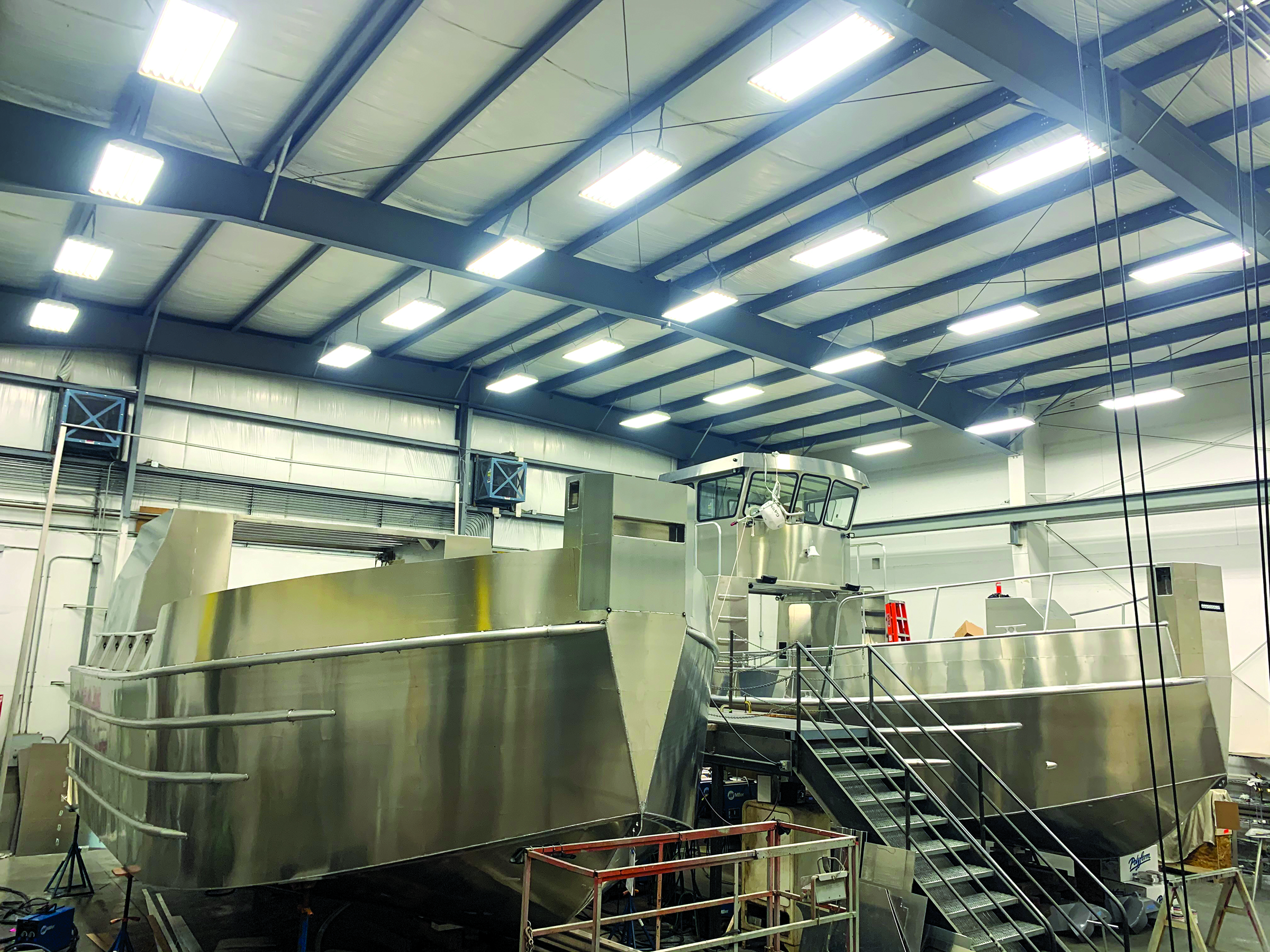At Rozema Boatworks it’s been all about building Bristol Bay gillnetters through the winter and into the spring. The Mount Vernon, Wash., boatyard got orders for two gillnetters around Christmas. A third gillnetter, which had been partially completed at another boatshop, was brought in to be finished off. All three had to be completed by mid-May to be shipped to Alaska in time for the Bristol Bay salmon opening.
These are raised pilothouse designs. That allows the gillnet reel to slide stern to bow beneath the pilothouse — setting off the stern and hauling back over the bow. It’s the first time Rozema Boatworks has built this design. “Each of (the three) have their own tweaks,” says Rozema Boatworks Dirk Rozema, “but each of them is basically the same design.”
They have very low deadrise as they are designed to operate in water as shallow as 12 inches. Power for all three will come from twin 600-hp Cummins 8.3 diesels matched up with Ultrajets. Rozema figures the gillnetters will pack 20,000 pounds. With 10,000 pounds aboard, they should be able to hit 25 knots and be “on step and go. That’s the intention,” he says. Running empty, he expects 36 knots.
Salmon will come in over a power roller from Kinematics Marine Equipment and then be divided among eight fish holds refrigerated with Pacific West Refrigeration’s RSW system. The net reel is from Petrzelka Brothers.
The pilothouse is mounted on towers near the stern, while all the accommodations are under the deck in the bow area and include four bunks, a small settee, and a galley. Only one gillnetter has a bunk in the pilothouse. All have the head in one of the two towers supporting the pilothouse. The other tower is for storage.
At Rozema Boatworks, it’s not all about completing three Bristol Bay gillnetters. There’s also a 56-foot aluminum passenger vessel with a ship date of July 20; so it’s no wonder that Rozema said back in March, “all the stuff we are doing has a pretty big push.”







